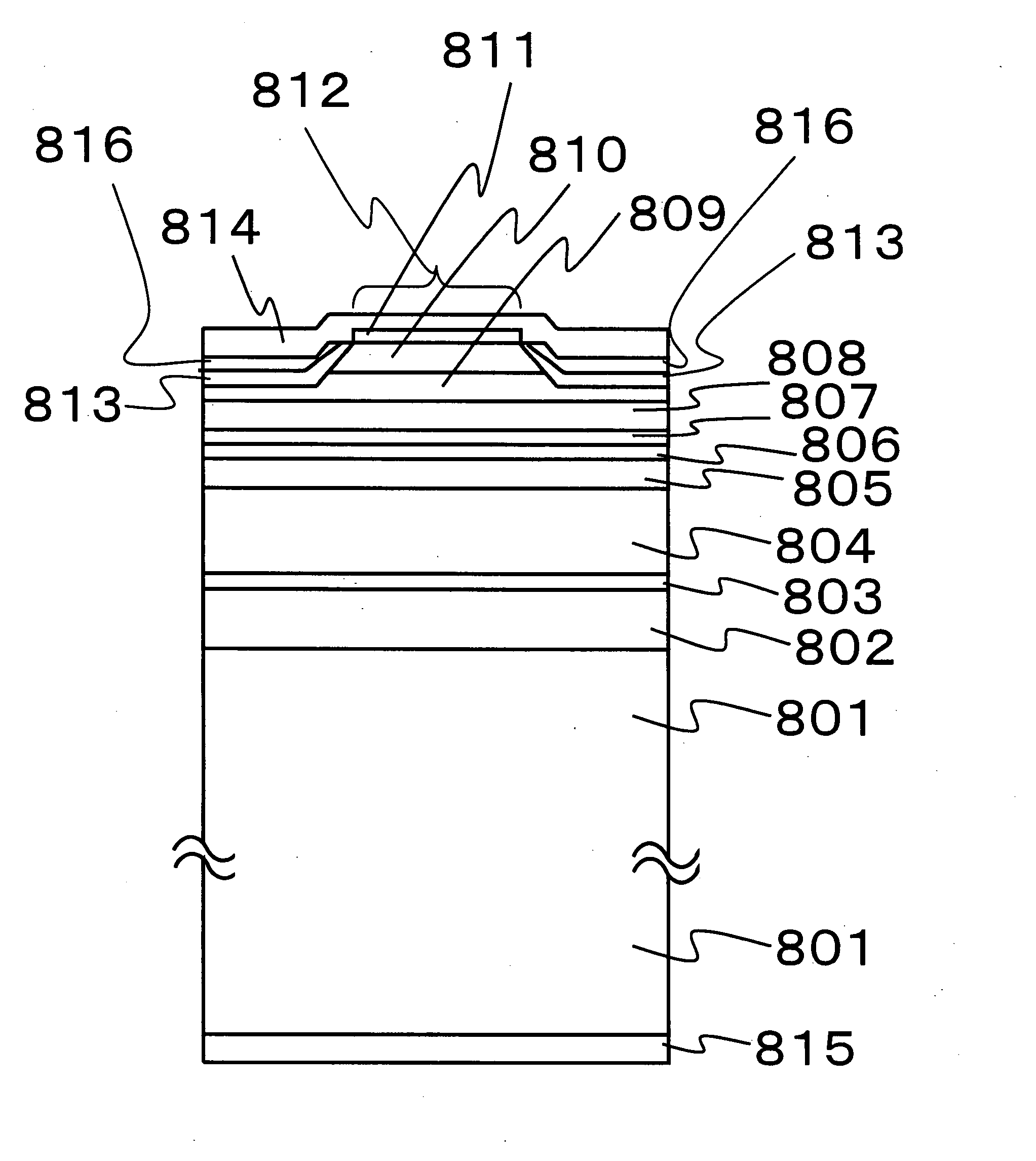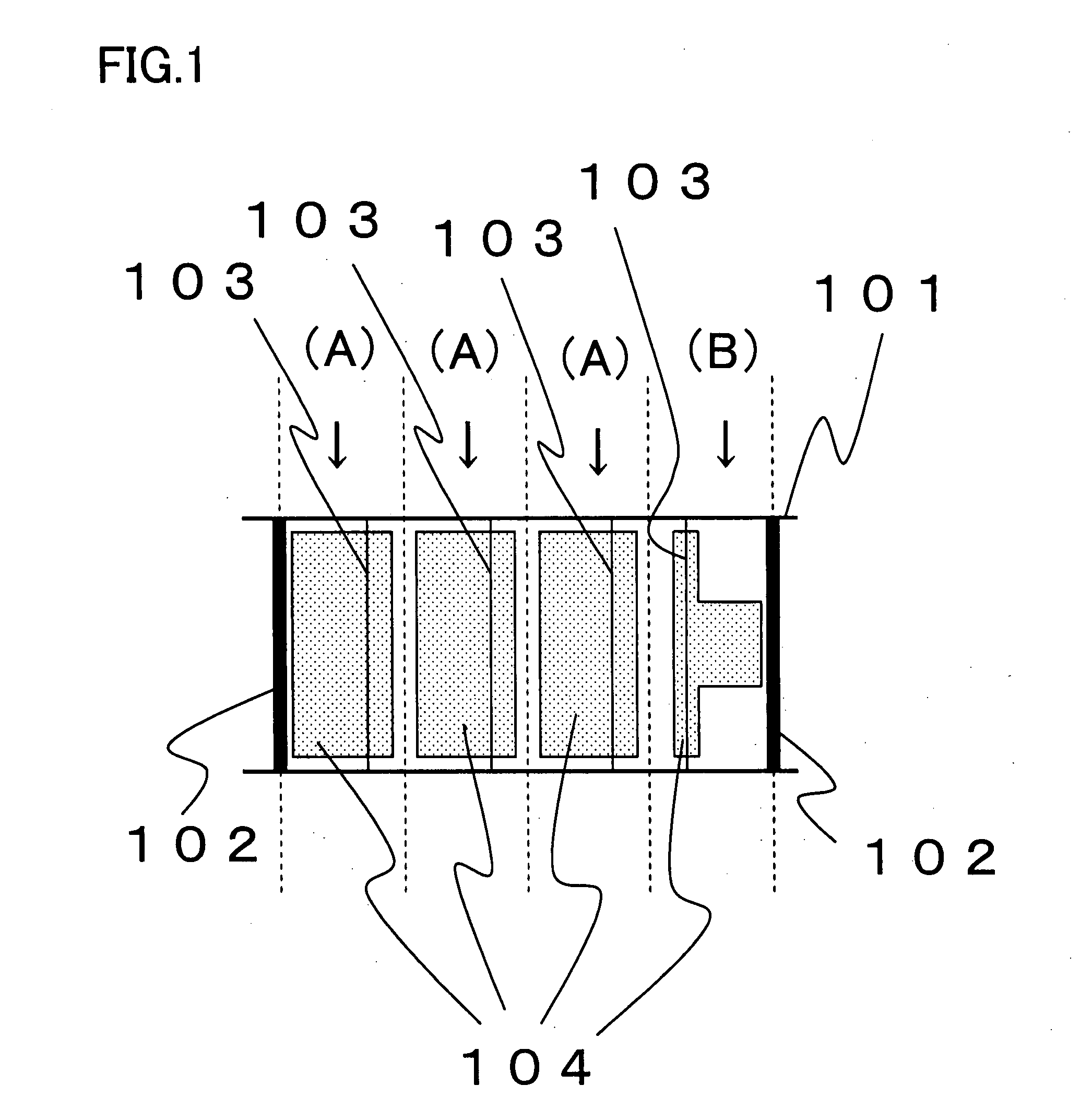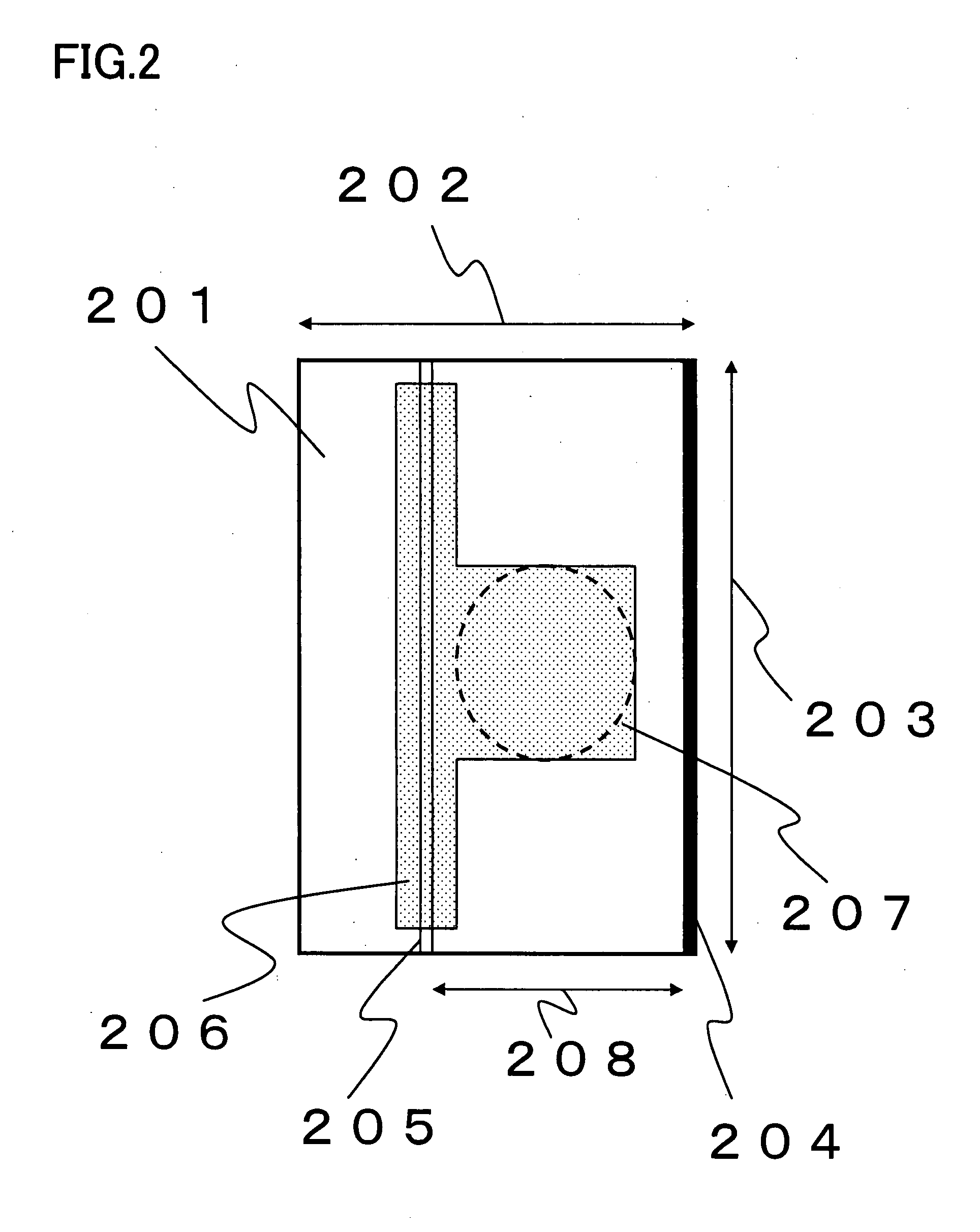Nitride semiconductor laser device and method of producing the same
a technology of nitride and laser device, which is applied in the direction of semiconductor laser, laser details, nanooptics, etc., can solve the problem of determining all chips (b) as defectiv
- Summary
- Abstract
- Description
- Claims
- Application Information
AI Technical Summary
Benefits of technology
Problems solved by technology
Method used
Image
Examples
first embodiment
[0049]FIG. 1 is a schematic plan view showing nitride semiconductor laser devices in a state of a laser bar according to a first embodiment of the present invention. In a laser bar 101 of this drawing, there are formed a plurality of trenched regions 102. Between trenched regions 102, a plurality of ridge-like stripes 103 are formed, and a plurality of p-side electrode pads 104 are formed to cover ridge-like stripes 103. Every dotted line in FIG. 1 indicates a chip division plane.
[0050]In the first embodiment, an area ratio of p-side electrode pad 104 to the upper surface area (hereinafter referred to as a chip area) of a nitride semiconductor laser device (B) is less than 90% differently from that of a nitride semiconductor laser device (A).
[0051]In an automatic chip inspection apparatus that uses an automatic image recognition process, it is preset to determine whether a chip is acceptable or not based on the shape of p-side electrode pad 104 and preset to determine nitride semico...
second embodiment
[0069]FIG. 5 is a schematic plan view illustrating a shape of a p-side electrode pad of a chip (B) as a nitride semiconductor laser device according to a second embodiment of the present invention. In this drawing, a nitride semiconductor laser device 501 is set to have a width 502 of 50 to 250 μm (e.g., 200 μm) and a length (corresponding to a resonator length) 503 of 300 to 1500 μm (e.g., 600 μm). A trenched region 504 of a worked substrate exists along the right side of chip 501. A ridge-like stripe 505 is formed at a position spaced by a distance 508 of 120 μm from the right side of the chip. A p-side electrode pad 506 is formed to include its partial area placed to cover ridge-like stripe 505 and another partial area (e.g., a square with a side of 80 μm) including a circle 507 of 80 μm diameter for wire bonding. P-side electrode pad 506 is formed with its area falling in a range of more than 2% and less than 90% of the chip area.
[0070]Circular area 507 for wire bonding is place...
third embodiment
[0072]FIG. 6 is a schematic cross-sectional view showing a main part of a layered structure in a nitride semiconductor laser device according to a third embodiment of the present invention. The cross-sectional structure of FIG. 6 is different from that of FIG. 8 only in that metal layer 816 of less than 0.1 μm thickness is replaced by a layer 616 of a light absorbing material of more than 10 nm thickness. That is, other layers 601 to 615 in FIG. 6 correspond to layers 801 to 815 in FIG. 8, respectively. Further, the p-side electrode pad in the nitride semiconductor laser device of the third embodiment can have a shape identical to that of the first or second embodiment.
[0073]Since light absorbing layer 616 is formed on insulating film 613 in the nitride semiconductor laser device of the third embodiment, an area having p-side electrode pad 614 has a higher reflectance with respect to visible light, as compared to the other remaining area not having p-side electrode pad 614. Owing to...
PUM
 Login to View More
Login to View More Abstract
Description
Claims
Application Information
 Login to View More
Login to View More - R&D
- Intellectual Property
- Life Sciences
- Materials
- Tech Scout
- Unparalleled Data Quality
- Higher Quality Content
- 60% Fewer Hallucinations
Browse by: Latest US Patents, China's latest patents, Technical Efficacy Thesaurus, Application Domain, Technology Topic, Popular Technical Reports.
© 2025 PatSnap. All rights reserved.Legal|Privacy policy|Modern Slavery Act Transparency Statement|Sitemap|About US| Contact US: help@patsnap.com



